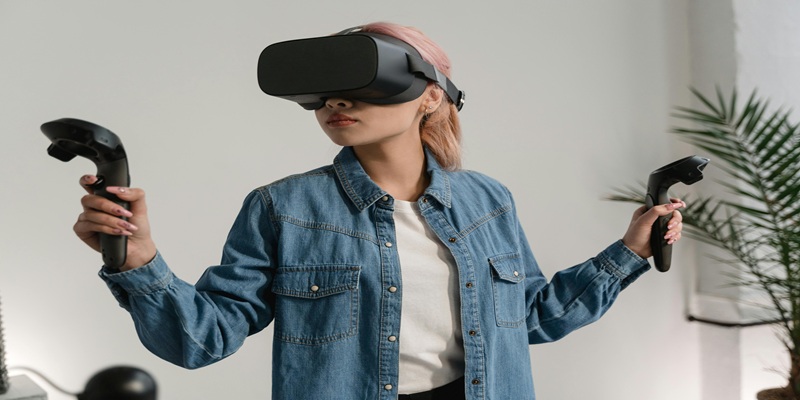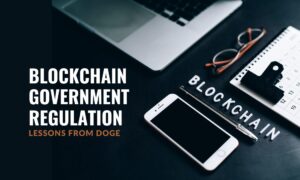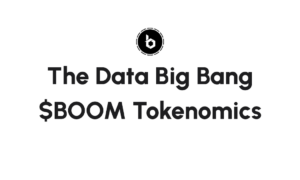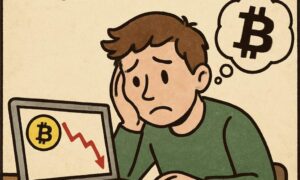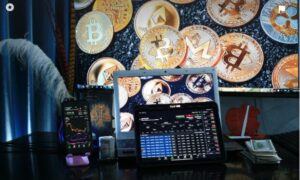Education has embraced technology to create more engaging and effective learning experiences. One groundbreaking innovation is the use of interactive virtual reality (VR) environments to teach investment concepts. This combination of immersive technology and financial education has the potential to revolutionize how individuals, especially beginners, approach investing. By blending complex ideas with hands-on experiences, interactive VR environments can make learning about investments both accessible and enjoyable.
The Role of VR in Education
Virtual reality is transforming the way we learn. Unlike traditional methods, VR provides an immersive and interactive environment that enables learners to grasp complex concepts through experience rather than rote memorization. In the context of investment education, VR can replicate real-world scenarios, allowing users to make decisions in a risk-free virtual setting. This method enhances understanding and builds confidence, especially for individuals unfamiliar with financial markets.
For instance, VR environments can simulate stock market operations, showing how external factors like economic news affect stock prices. Learners can experiment with buying and selling stocks, witnessing the outcomes of their decisions without the fear of financial loss. This experiential learning approach has proven to be more effective than traditional teaching methods, particularly for subjects involving intricate processes like investing.
Benefits of Interactive VR in Teaching Investments
Interactive VR environments offer several advantages that traditional learning methods cannot match. These benefits include enhanced engagement, practical application, and adaptability to different learning styles.
Enhanced Engagement
One of the primary advantages of VR is its ability to capture and retain attention. Unlike lectures or textbooks, VR immerses users in an environment where they can interact with various elements. For investment education, this means learners can explore different investment scenarios, analyze risks, and see the immediate impact of their choices. This active involvement keeps learners engaged and helps them retain information more effectively.
Practical Application of Concepts
Another critical benefit is the ability to apply theoretical knowledge in a practical setting. In traditional education, students often struggle to connect what they learn in class to real-world applications. With VR, they can bridge this gap by practicing investment strategies in a simulated market. For example, they can learn to diversify their portfolios, analyze market trends, and calculate returns, all within a controlled and risk-free environment.
Adaptability to Different Learning Styles
People learn in different ways. Some prefer visual aids, while others benefit from hands-on experiences. Interactive VR environments cater to a wide range of learning styles by combining visual, auditory, and kinesthetic elements. This adaptability ensures that more individuals can understand and retain investment concepts, regardless of their preferred learning method.
Key Features of VR-Based Investment Education Tools
Interactive VR platforms designed for investment education often include several essential features. These features aim to make the learning experience as realistic and beneficial as possible.
Real-Time Simulations
One of the most impactful features of VR investment tools is real-time market simulation. Users can participate in virtual stock trading, observing how markets react to various stimuli such as economic reports, geopolitical events, or company performance. These simulations help learners understand the dynamic nature of financial markets and the importance of staying informed.
Gamified Learning Modules
Gamification adds an element of fun and competition to learning. Many VR platforms incorporate gamified modules where users earn points or rewards for making smart investment decisions. These modules encourage continuous learning and motivate users to refine their strategies.
Analytical Tools
To make the learning process more comprehensive, VR platforms often include analytical tools. These tools allow users to study market data, calculate risks, and evaluate potential returns. By learning to use these tools in a virtual setting, users become better prepared to analyze real-world investment opportunities.
Personalized Feedback
Another essential feature is personalized feedback. After completing a module or simulation, users receive detailed insights into their performance. This feedback highlights areas of improvement and reinforces successful strategies, ensuring a well-rounded learning experience.
Applications Beyond Beginners
While VR environments are particularly beneficial for beginners, they also offer value to experienced investors. For advanced users, these platforms can serve as a testing ground for new strategies. For example, professional traders can experiment with different approaches to portfolio management or test the impact of various economic scenarios on their investments. This versatility makes VR a valuable tool for learners at all skill levels.
Challenges and Limitations
Despite its many advantages, VR-based investment education is not without challenges. The primary hurdle is accessibility. High-quality VR equipment can be expensive, limiting its availability to a broader audience. Additionally, the development of realistic and engaging VR environments requires significant time and resources, which can drive up costs.
Another challenge is the learning curve associated with using VR technology. While younger generations may adapt quickly, older individuals or those less familiar with technology might struggle initially. Addressing these barriers is crucial to ensuring the widespread adoption of VR in investment education.
Future Prospects of VR in Investment Education
The future of VR in investment education looks promising. As technology becomes more affordable and accessible, more institutions and educators are likely to adopt VR tools. Furthermore, advancements in artificial intelligence and machine learning could enhance the realism and effectiveness of VR simulations. For instance, AI could create personalized learning paths, adapting the difficulty level and content based on a user’s progress and understanding.
Another exciting prospect is the integration of VR with other technologies like augmented reality (AR) and blockchain. AR could add another layer of interactivity, while blockchain could enable secure and transparent virtual trading environments. These innovations have the potential to make VR-based investment education even more impactful.
Conclusion
Interactive VR environments represent a transformative approach to teaching investment concepts. By providing immersive and engaging learning experiences, these tools can demystify the complexities of investing and empower individuals to make informed financial decisions. While challenges like cost and accessibility remain, ongoing technological advancements and growing interest in VR education suggest a bright future for this innovative teaching method.
Whether you’re a beginner looking to understand the basics of investing or a seasoned investor seeking to refine your strategies, VR offers a unique and effective way to enhance your financial literacy. As more people embrace this technology, the barriers to understanding investment concepts could continue to diminish, paving the way for a more financially informed society.

